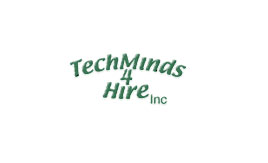Biotech-related International Events and Missions: Getting the Most out of Your Participation
Third in a Series
Joanne Gucwa jogucwa@techmanage.com
INTRODUCTION
In the second article in this series, we talked about finding information on your prospective customers or partners, the top circle of the diagram below. This section of advance preparation for your participation in an international biotech event looks at your competition: who they are, their strengths and weaknesses (actual or perceived in the marketplace – as “perception” becomes “reality” in the mind of the perceiver), and what direction they may be planning for the future. This information is just as important as the careful study of your prospects because it will help you position your own marketing and technology message to your prospect customers and partners, highlighting the benefits of your technology.
|
A side note: as scientists, we have a strong tendency toward emphasizing the details of our technology at the expense of the marketing message, that is, why your prospects should be interested in your technology: what problem does it solve; whether it makes your prospect’s research Easier, Faster, Less Expensive, Less Invasive (to patients), More Accurate, More Effective, More Portable or even allows them to do something that was impractical or impossible in the past (such as less painful drug delivery). |

Competitors. These are companies – large, medium, small and even start-ups – that offer a product or service that your own prospects might consider. They may not yet be marketing actively, but you should still consider them to be potential competitors. As a matter of fact, if they are not actively marketing their technology, it may be that they are seeking licensing or other strategic partners, which could be a good opportunity for you to pursue.
Event Sponsor’s Website. As we noted in the last section covering your prospect customers and partners, you should reviewthe EXHIBITOR LIST to see if any of your competitors will be exhibiting. Check the CATEGORIES of your own products and services if the event sponsor offers this option and then click through to the links to those websites or find them through search engines. Some of your competitors may also be speakers, so be sure to review those as well and plan to attend their presentations if you are able.
Competitor Websites. In addition to the items we listed in the last section’s discussion on your prospects’ websites, review your competitor PRESS RELEASES to get an idea of what is important to them. Note if they participate in any standards-setting committees, which indicates their role as INFLUENCERS (see discussion on influencers below) as well as COMPETITORS. Do they list patents (U.S.or international) awarded or patent applications? See the discussion on patents under the “Search Engines and Other Resource Websites” on the next page.
You may be able to download WHITE PAPERS as well. Most sites ask you to register before you can download their whitepapers. Be aware that you competitors will have the information you provide. For this reason, many people use their personal, rather than their business, e-mail accounts to access competitor whitepapers. Do provide your professional information if you think your products or services complement, rather than compete with, theirs. If that is the case, you may be able to arrange a meeting with them at the event. (This is why it is important to your upfront “homework” research well in advance of the event you plan to attend).
Publicly-traded companies usually provide links to their shareholder filings. Their 10K documents will include a market and competitive analysis along with financials, regulatory issues, lawsuits and other important information that will help you assess their strength as competitors. The financial statements will reveal their size, profitability and upward or downward trends over time.
Even if a company is not publicly traded, you can often find financial information, since most companies that have received venture or other private-equity funding (and some of those seeking funding) will have a “For Investors” link.
Search Engines and Other Resource Websites. You can find a wealth of information on your competition by doing a search on your competitors’ names. For example, their page rank which is where they appear on the major general search engines (Google, Yahoo and MSN are the top 3; I also use ask.com) will reveal how much effort they are putting into having people find them online. What links are appearing in addition to their own pages? Are they listed in biotech and life sciences directories, such as Cato Research’s Biotechnology Directory (http://www.cato.com/biotech/)? Who is linking to them? You can find out at Alexa (http://www.alexa.com/). Quantcast (http://www.quantcast.com/, like Alexa, provides traffic rankings but does not provide information on incoming links. Don’t rely on the reported website traffic rankings of either site as gospel truth, however. For example, Alexa ranked Bio.com at 330,377 in mid-October 2007 and Quantcast ranked Bio.com at 175,716 -- roughly half Alexa’s ranking -- on the same day and same time.
You can search the U.S. Patent Office website for patents and patent applications by keyword, organization, inventor name and multiple other options. Start at http://www.uspto.gov/patft/index.html and then click on “Quick” or “Advanced Search.”
Technical and General Interest Online Publications. It is likely that you found references to your competitors in your search engine research. By clicking on those results, you may find organizations that your competitors are partnering with, such as hospitals, universities and laboratories. These may be potential partners for you as well.
Influencers/Resources. These may be regulators (discussed next), angel, venture capital or corporate investors, professional and technical associations, editors and writers for influential technical and general-interest publications, standards-setting agencies, elected officials…not an exhaustive list, but you get the idea. We have linked to some of these influencers and resources at www.techmanage.net/resources.
Regulatory, other Environment. These include: the U.S. FDA, and other national entities, such as the National Institutes of Health (NIH); state laws, which may differ from national laws, covering for example highly-debated cloning or stem cell research (see http://www.washingtonpost.com/wp-dyn/content/custom/2005/08/12/CU2005081200827.html). Do a search if your areas of interest include controversial issues.
Technology Status. Be aware that disruptive technologies can make obsolete older, more established technologies. For example, our September 2007 articles report (http://techmanage.net/archives/September07.pdf) cites a novel biotech use of inket printer technology...for painless drug injection; another disruptive technology is a new kind of rapid diagnostic technology that relies on magnetic nanoparticles and can use blood, saliva, or any other samples with no preparation.
Well, we talked about deciding what your objectives are for attending an international trade event and looked at the levels of experience and expertise of yourself or your organization in the first article of this series, and about learning about the marketplace in the second and third articles. In the fourth article, we will bring internal and external together so you can revisit and most likely revise your original objectives. See you next time.
Login
Advertisements
Colorless, odorless, biodegradable instant sanitizer is effective against both gram positive and gram-negative bacteria; kills in 30 seconds. Free of chlorine and quaternary ammonium compounds. EPA registered food contact surface sanitizer. Austin Davis Industries, Inc.
Safe, totally natural, 100% biodegradable, multi-functional cleaning product providing safety in the workplace for both humans and environmental surfaces - without compromising performance. Can be diluted up to 25:1. Austin Davis Industries, Inc.





